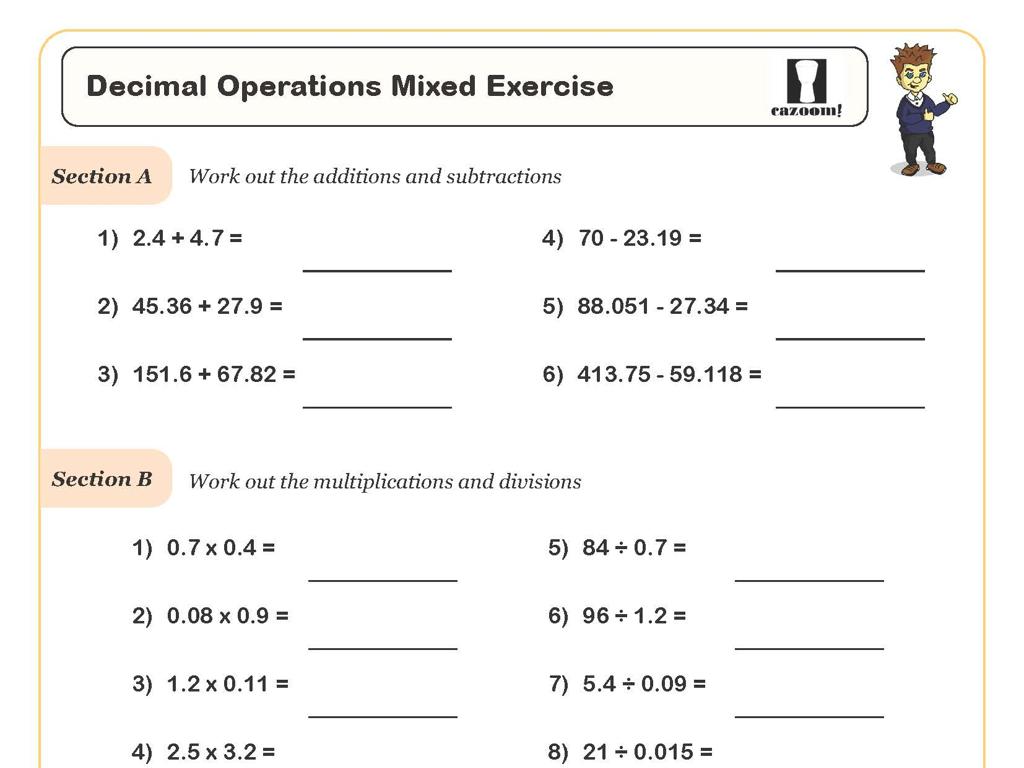Divide 2-Digit Numbers By 1-Digit Numbers
Subject: Math
Grade: Fourth grade
Topic: Divide By One-Digit Numbers
Please LOG IN to download the presentation. Access is available to registered users only.
View More Content
Welcome to Division: Sharing Equally
– What is division?
– Division is splitting into equal parts or groups.
– Division as equal sharing
– Like sharing 12 apples with 3 friends equally.
– Division in daily life
– Dividing pizza slices, or splitting chores among siblings.
– Practice with examples
|
This slide introduces the concept of division to fourth graders as a way of sharing things equally among a certain number of people or groups. Start by explaining division as the process of splitting a number into equal parts. Use relatable examples such as sharing food items or dividing tasks to illustrate the concept. Emphasize that division is not just a math operation but a skill used in everyday life. Encourage students to think of their own examples of division from their experiences. Conclude with a few simple division problems to practice, ensuring students understand the practical application of the concept.
Division Vocabulary: Key Terms
– Understanding ‘Dividend’
– The number being divided, e.g., in 24 ÷ 3, 24 is the dividend
– What is a ‘Divisor’?
– The number by which we divide, e.g., in 24 ÷ 3, 3 is the divisor
– Finding the ‘Quotient’
– The result of division, e.g., in 24 ÷ 3, 8 is the quotient
– Division symbols and terms
|
This slide introduces students to the basic vocabulary of division, which is essential for understanding and solving division problems. The dividend is the number that is being divided up. The divisor is the number we are dividing by. The quotient is the answer to a division problem. Use the example 24 ÷ 3 to illustrate these terms clearly. 24 is the dividend (the number to be divided), 3 is the divisor (the number we divide by), and the result, which is 8 in this case, is the quotient. Reinforce these terms by asking students to identify the dividend, divisor, and quotient in different division problems. This foundational knowledge will help them as they learn to divide 2-digit numbers by 1-digit numbers.
Dividing 2-Digit Numbers by 1-Digit Numbers
– Steps to divide a 2-digit number
– Write the dividend and divisor, then draw the division bar and proceed with division steps.
– Example: Divide 45 by 5
– 45 ÷ 5 equals 9. Place 9 above the division bar and multiply 9 by 5, subtract to find the remainder.
– Understanding remainders
– Remainders are what’s left over after division if the number doesn’t divide evenly.
– Practice with different numbers
|
This slide introduces the concept of division with 2-digit numbers. Start by explaining the division process step by step, ensuring students understand terms like ‘dividend’ and ‘divisor’. Use 45 ÷ 5 as a clear example to demonstrate the process, showing how to write it out and solve it. Discuss the concept of remainders and their significance, especially when the numbers do not divide evenly. Provide additional examples for students to practice, such as 52 ÷ 3 or 76 ÷ 4, and encourage them to find the quotient and remainder. This will help solidify their understanding of division and prepare them for more complex problems.
Let’s Practice Division!
– Solve 56 ÷ 7
– What is 56 divided by 7?
– Solve 81 ÷ 9
– Can you divide 81 by 9?
– Work together on problems
– Help each other and compare answers
– Discuss solutions as a class
– We’ll review the answers together
|
This slide is designed for a collaborative classroom activity where students will practice dividing 2-digit numbers by 1-digit numbers. Provide two practice problems for the students to solve. Encourage them to work in pairs or small groups to foster a collaborative learning environment. As they work through the problems, remind them to use division strategies they’ve learned, such as repeated subtraction, using multiplication facts, or drawing models. After they’ve completed the problems, bring the class together to discuss the solutions and the different methods used to arrive at the answers. This will help reinforce their understanding and allow them to learn from each other.
Understanding Remainders in Division
– What is a remainder?
– The number left after dividing.
– Seeing remainders in examples
– If 13 cookies are shared among 4 friends, 1 cookie remains.
– Let’s solve: 34 ÷ 6
– How many 6’s in 34? What’s left over?
|
This slide introduces the concept of remainders in division, which occurs when a number cannot be evenly divided by another. Begin by explaining that a remainder is what is left after division when the numbers don’t divide evenly. Use relatable examples, such as dividing cookies among friends, to illustrate this concept. For the practice problem, guide students through the process of how many times 6 can fit into 34, which is 5 times with a remainder of 4. Encourage students to think about remainders in terms of real-life situations, like sharing items equally. This will help them grasp the concept of division with remainders more concretely.
Division Tips and Tricks
– Memorize multiplication tables
– Knowing times tables makes division faster.
– Use estimation for checking
– Estimate to quickly verify division answers.
– Understand division via subtraction
– Subtract repeatedly to see how division works.
– Practice with examples
|
This slide aims to provide students with helpful strategies to tackle division problems involving 2-digit numbers divided by 1-digit numbers. Emphasize the importance of memorizing multiplication tables as it is the foundation of understanding division. Show how estimation can be a quick way to check if their division answer is reasonable. Illustrate how division is related to subtraction by showing that division is essentially subtracting the same number repeatedly. Provide examples for each tip to ensure students can apply these strategies in practice. For instance, if we divide 45 by 5, knowing that 5 times 9 equals 45 can help us quickly find the answer. Encourage students to practice these tips with different problems to build their confidence and proficiency in division.
Class Activity: Division Bingo
– Receive your Division Bingo card
– Solve division problems
– Use division to divide 2-digit numbers by 1-digit numbers
– Find answers on your Bingo card
– Aim for five in a row to win!
|
This interactive class activity is designed to help students practice dividing 2-digit numbers by 1-digit numbers in a fun and engaging way. Each student will receive a Bingo card with different quotients on it. The teacher will call out or display division problems, and students will solve them and mark the answers on their Bingo cards. The first student to get five correct answers in a row, either horizontally, vertically, or diagonally, will shout ‘Bingo!’ and win the game. Teachers should prepare multiple Bingo cards with randomized quotients and ensure that there are enough problems to cover all possibilities on the cards. Possible variations of the game could include ‘Four Corners Bingo’ or ‘Full Card Bingo’ for extended play.
Wrapping Up: Division Mastery
– Review today’s division concepts
– Homework: Division worksheet
– Finish the provided worksheet to practice dividing 2-digit by 1-digit numbers.
– Study for the upcoming quiz
– A quick quiz next class will test your division skills.
– Practice makes perfect!
– Keep practicing with more examples at home!
|
As we conclude today’s lesson on dividing 2-digit numbers by 1-digit numbers, it’s important to recap the main points to reinforce learning. For homework, students are expected to complete a worksheet that provides additional practice on the concepts covered in class. This will prepare them for a quick quiz in the next session, which will assess their understanding and ability to divide 2-digit numbers by 1-digit numbers. Encourage students to practice more problems at home to become confident in their division skills. The more they practice, the better they will get at recognizing patterns and solving division problems efficiently.





